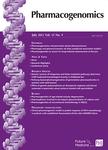版权所有:内蒙古大学图书馆 技术提供:维普资讯• 智图
内蒙古自治区呼和浩特市赛罕区大学西街235号 邮编: 010021

作者机构:Delft Univ Technol Fac Informat Technol & Syst Dept Mediamet Informat & Commun Theory Grp Delft Netherlands
出 版 物:《PHARMACOGENOMICS》 (药物基因组学)
年 卷 期:2002年第3卷第4期
页 面:507-525页
核心收录:
学科分类:1007[医学-药学(可授医学、理学学位)] 10[医学]
主 题:bioinformatics genetic regulatory networks microarray data analysis
摘 要:The inference of genetic interactions from measured expression data is one of the most challenging tasks of modern functional genomics. When successful, the learned network of regulatory interactions yields a wealth of useful information. An inferred genetic network contains information about the pathway to which a gene belongs and which genes it interacts with. Furthermore, it explains the function of the gene in terms of how it influences other genes and indicates which genes are pathway initiators and therefore potential drug targets. Obviously, such wealth comes at a price and that of genetic network modeling is that it is an extremely complex task. Therefore, it is necessary to develop sophisticated computational tools that are able to extract relevant information from a limited set of microarray measurements and integrate this with different information sources, to come up with reliable hypotheses of a genetic regulatory network. Thus far, a multitude of modeling approaches have been proposed for discovering genetic networks. However, it is unclear what the advantages and disadvantages of each of the different approaches are and how their results can be compared. In this review, genetic network models are put in a historical perspective that explains why certain models were introduced. Various modeling assumptions and their consequences are also highlighted. In addition, an overview of the principal differences and similarities between the approaches is given by considering the qualitative properties of the chosen models and their learning strategies.